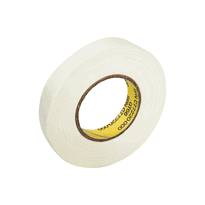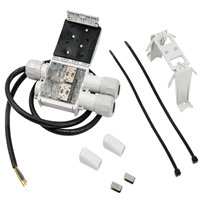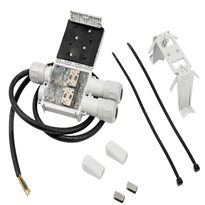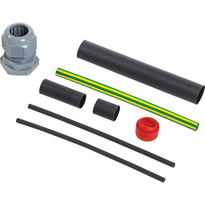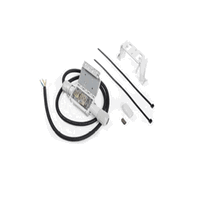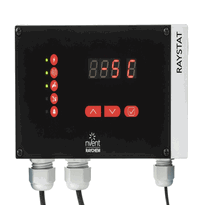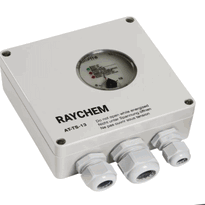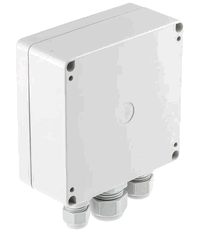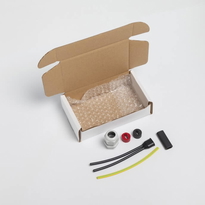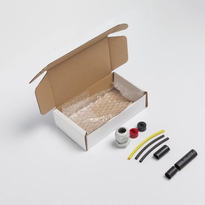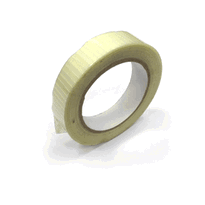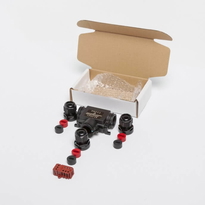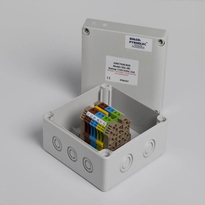Heat Wrap for Outdoor Pipes
Outdoor pipe heat wraps utilize materials such as foam, rubber, fiberglass, aluminium foil, and protective plastics to deliver effective insulation and prevent heat loss or pipe freezing. Foam and rubber wraps are flexible, weather-resistant, and well-suited to various outdoor conditions, offering ease of installation and durability. Fiberglass provides high-temperature resistance, making it ideal for exposed pipes that encounter harsh weather. Aluminium foil reflects radiant heat, thereby enhancing the overall insulation performance, while plastics serve as protective layers against moisture, chemicals, and physical damage.
Choosing the appropriate material depends on the environmental factors specific to your location, such as exposure to extreme cold, moisture, and mechanical stress. Correct installation techniques are crucial; ensuring tight fitting without gaps, securing wraps firmly, and avoiding compression to maintain insulation integrity will optimize performance and longevity.
Continuing with this guidance will help you select the right materials and apply them correctly, resulting in reliable protection for outdoor pipes. Properly insulated pipes will minimize heat loss, prevent freezing, and extend the lifespan of your plumbing system during the colder months.
Common Materials Used in Outdoor Pipe Heat Wraps
When selecting a heat wrap for outdoor pipes, understanding the materials used is essential to ensure effective insulation and long-term durability. Different materials offer various benefits suited to specific environments and applications.
Foam pipe wraps, typically made from closed-cell polyethylene or elastomeric foam, provide excellent thermal insulation. They're cost-effective, lightweight, and suitable for both hot and cold pipes, especially low-temperature lines. These wraps help reduce heat loss and are easy to install, making them a popular choice for various outdoor applications. The cost-effectiveness of foam insulation makes it an accessible option for many homeowners and contractors alike.
Rubber pipe wraps, constructed from synthetic nitrile rubber or elastic foam, offer superior flexibility and resilience. They're highly resistant to moisture and ideal for damp or outdoor environments where exposure to weather is frequent. Rubber wraps can withstand extreme weather conditions without cracking or deteriorating, although they tend to be more expensive than foam options.
Fiberglass pipe wraps, composed of mineral wool or glass fibers, excel in high-temperature applications. They provide excellent heat resistance but require careful installation, often with a protective facing to prevent fibre abrasion and improve safety. Fiberglass wraps are suitable for industrial outdoor settings where high heat retention is necessary. Additionally, these materials are often used with protective coatings that enhance their durability and resistance to environmental factors.
Aluminium foil wraps work by reflecting radiant heat, thereby improving insulation efficiency, especially in outdoor settings where sun exposure can increase heat gain. They're typically used in combination with other insulating materials to maximize performance.
PVC or plastic wraps are useful in environments prone to corrosion or chemical exposure. While they don't provide high levels of thermal insulation on their own, they serve well as protective covers in corrosive outdoor conditions, offering durability and resistance to moisture.
Selecting the appropriate material depends on the specific needs of your pipes and environment, considering factors such as temperature, exposure to weather, and potential chemical exposure. Proper installation and choosing the right materials can significantly extend the lifespan of your outdoor piping and improve energy efficiency. For optimal results, it is also important to consider the insulation's environmental impact and its capacity to meet sustainability standards, especially if supporting environmental initiatives is a priority.
Factors to Consider When Choosing a Pipe Insulation System
Selecting the appropriate pipe insulation system involves careful evaluation of various factors that impact both its performance and durability, particularly within specific environmental and operational contexts.
Key considerations include the size, material, and temperature requirements of the pipe. These elements determine the necessary insulation thickness and the most suitable material choice. Typically, larger pipes or those made of metal require thicker insulation with lower thermal conductivity to effectively reduce heat loss and prevent freezing in colder climates.
Environmental conditions such as exposure to moisture, UV radiation, and wind must also be taken into account. Insulation materials should possess good moisture resistance and durability to withstand these elements over time. Using weather-resistant pipe lagging can provide added protection in outdoor environments.
Installation constraints play a significant role as well. Factors such as available space and the accessibility of pipes can influence the type of insulation system selected, ensuring ease of installation and maintenance.
Furthermore, it's essential to balance upfront costs with potential long-term savings in energy and maintenance. Considerations surrounding structural resilience and the insulation’s ability to maintain performance over time are key aspects of a comprehensive assessment.
Proper Installation Techniques for Effective Outdoor Pipe Protection
Proper installation of outdoor pipe protection systems begins with meticulous preparation of both the pipes and the work area to guarantee safety and effective insulation. It's essential to carefully inspect the pipes for signs of leaks or damage prior to installation, as these issues can compromise the insulation and pose electrical hazards. Surfaces should be thoroughly cleaned to remove dirt, mud, and debris, ensuring optimal adhesion of the insulation materials and efficient heat transfer. Protecting pipes from freezing during winter helps prevent cracks and bursts, safeguarding your home against costly repairs. Applying a reflective barrier, such as aluminium foil, on plastic pipes can help distribute heat evenly before the heat tape is installed. This step enhances the efficiency of the heating system and ensures consistent protection. When selecting a power source, always utilize a nearby GFCI (Ground Fault Circuit Interrupter) outlet to reduce the risk of electrical shock. It's important to avoid extension cords; instead, connect directly to a properly rated outdoor socket. Routing the heat tape correctly is vital for effective performance. Begin installation at the electrical connection point, ensuring that the tape runs parallel along straight sections of piping. When navigating curves or bends, spiral the tape around the pipe, avoiding overlaps that could cause uneven heating or potential hotspots. Secure the heat tape at approximate intervals of 30 centimeters using appropriate electrical tape, making certain that each section maintains firm contact with the pipe and that the tape doesn't shift during operation. Incorporating advanced manufacturing techniques can enhance the durability and reliability of your pipe insulation setup, ensuring long-term protection.
Conclusion
Selecting the appropriate outdoor pipe heat wrap requires careful consideration of materials, climate conditions, and installation methods. By understanding common materials such as foam, rubber, and rubberized coatings, and evaluating factors like durability and heat retention, property owners can optimize their protection strategies. Proper installation techniques, including securing wraps tightly and maintaining accessibility for inspections, ensure the effectiveness and longevity of the insulation. This comprehensive approach minimizes the risk of pipe freeze damage, safeguarding infrastructure through reliable, scientifically grounded methods.








